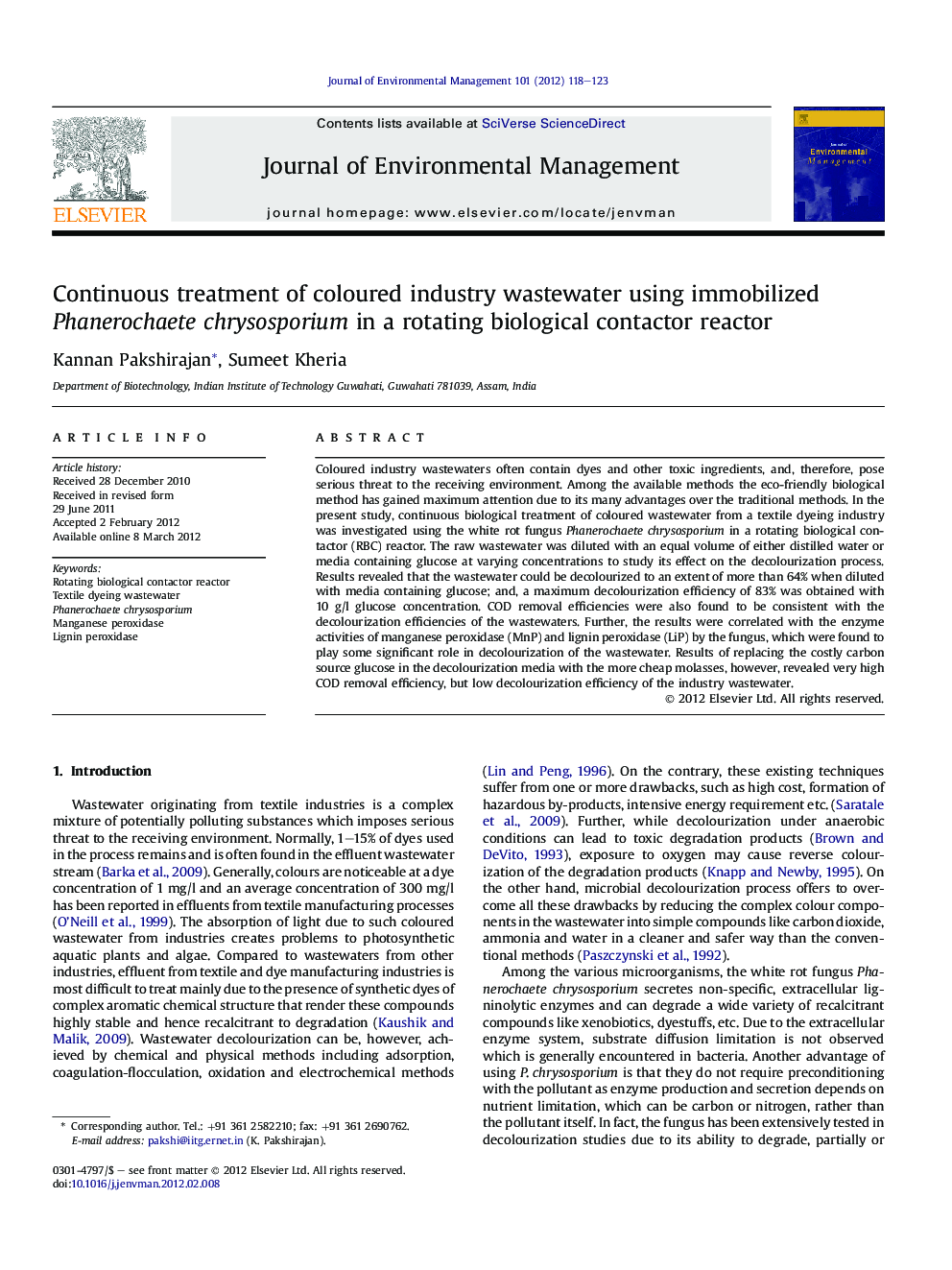| کد مقاله | کد نشریه | سال انتشار | مقاله انگلیسی | نسخه تمام متن |
|---|---|---|---|---|
| 1056843 | 1485311 | 2012 | 6 صفحه PDF | دانلود رایگان |

Coloured industry wastewaters often contain dyes and other toxic ingredients, and, therefore, pose serious threat to the receiving environment. Among the available methods the eco-friendly biological method has gained maximum attention due to its many advantages over the traditional methods. In the present study, continuous biological treatment of coloured wastewater from a textile dyeing industry was investigated using the white rot fungus Phanerochaete chrysosporium in a rotating biological contactor (RBC) reactor. The raw wastewater was diluted with an equal volume of either distilled water or media containing glucose at varying concentrations to study its effect on the decolourization process. Results revealed that the wastewater could be decolourized to an extent of more than 64% when diluted with media containing glucose; and, a maximum decolourization efficiency of 83% was obtained with 10 g/l glucose concentration. COD removal efficiencies were also found to be consistent with the decolourization efficiencies of the wastewaters. Further, the results were correlated with the enzyme activities of manganese peroxidase (MnP) and lignin peroxidase (LiP) by the fungus, which were found to play some significant role in decolourization of the wastewater. Results of replacing the costly carbon source glucose in the decolourization media with the more cheap molasses, however, revealed very high COD removal efficiency, but low decolourization efficiency of the industry wastewater.
► Textile wastewater decolourization was achieved using a RBC reactor system.
► Nutrient supplementation is necessary for efficient wastewater decolourization.
► Lignolytic enzymes produced by Phanerochaete chrysosporium play important role in the process.
► Sugarcane molasses can be an alternative to costly glucose for wastewater treatment.
Journal: Journal of Environmental Management - Volume 101, 30 June 2012, Pages 118–123